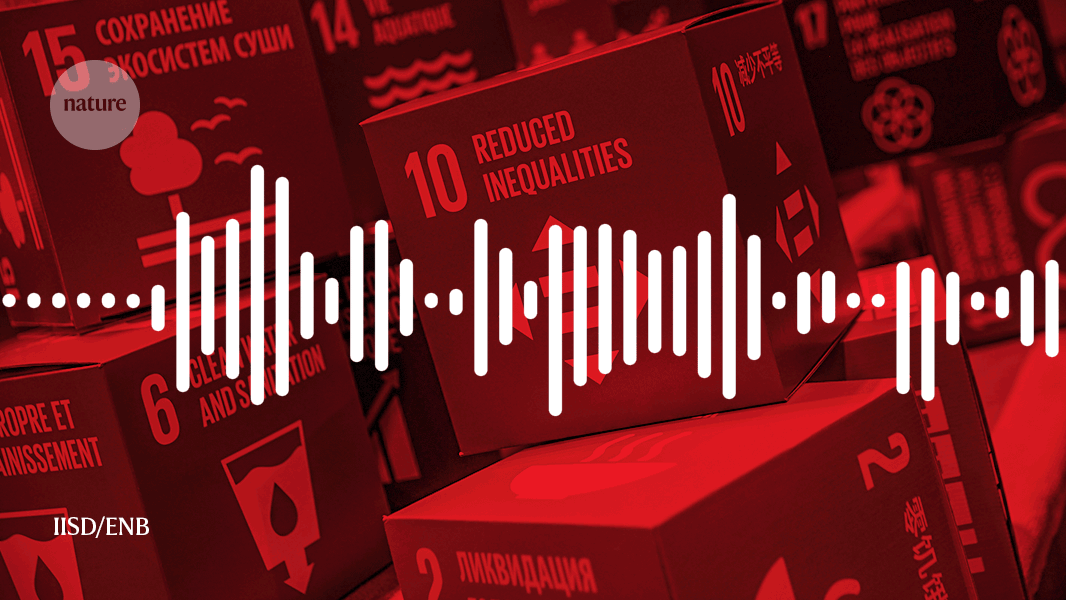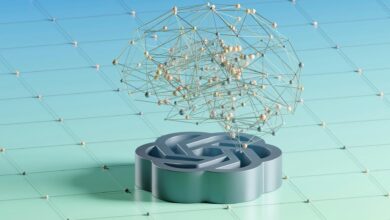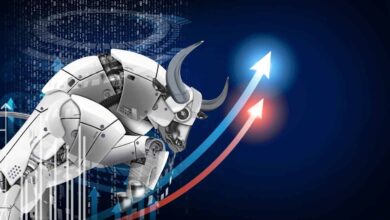How artificial intelligence is helping Ghana plan for a renewable energy future

Fabio Pullizi: 00:09
Hello, this is How to Save Humanity in 17 Goals, a podcast brought to you by Nature Careers, in partnership with Nature Water.
I’m Fabio Pulizzi, chief editor of Nature Water. This is the series where we meet the scientists who have been quietly incrementally working towards the global development targets set by the United Nations in 2015.
World leaders pledged to solve a range of economic, environmental and social issues, and the package of 17 Sustainable Development Goals were born.
Since then, in a huge effort, thousands of researchers all over the world have been tackling the biggest problems that the planet faces today.
In episode seven, we look at Sustainable Development Goal number seven: how to ensure access to affordable, reliable, sustainable and modern energy for all.
And meet an engineer who uses artificial intelligence to help Ghana design its renewable energy future.
Julien Harou 01:21
Okay, hi, my name is Julien Harou. I’m a professor in water management and infrastructure systems at the University of Manchester in the United Kingdom.
I started out as pretty much a pure water resources professor. So I would look to help water companies and countries plan their their water resources and manage them.
But very quickly, because of hydropower, I moved into joint water and energy systems. And water is also used for food production. So I somehow grew from water to water, energy, food. The United Nations General Assembly in 2015 developed a series of goals. And goal number seven is the one related to energy. So the formal goal is to ensure access to affordable, reliable and sustainable modern energy for all.
And so the question quickly becomes: “Well, are we making any progress to that goal?”
Well, actually, the news is relatively good. From 2015 to 2021, the portion of the global population with access to electricity increased from 87% to 91%.
So it’s pretty decent, that means there’s a little less than than 10% of people now who don’t have access to energy.
The other, the other thing that was mentioned was that these goal wants sustainable energy. And what that generally means is renewable energy. So energy that doesn’t require burning fossil fuels. And in 2023, about 30% of the global energy generation was from renewable energy sources.
These have much lower carbon dioxide emissions. And so this is also a pretty big success, especially since….in the year 2000, so just less than 25 years ago, it was 18%. So the news for SDG goal number seven is actually pretty decent. And things are progressing rapidly.
Julien Harou 03:33
You can’t study in university water energy food systems, that doesn’t exist. So it’s quite, the people who are in this field, it’s generally a little bit unusual where they come from.
So I was actually born in Brazil, grew up and raised in the United States. Then I trained in Belgium, my native country where my parents are from, as a geologist.
And then slowly I started working in the in the water field, and then got drawn to civil engineering because I just saw the problems in the world created by infrastructure.
So I went back late in life. I was a mature student, and did graduate degrees at Cornell and UC Davis.
And there I really started to focus on on water and economics. And so that’s how I got slowly into this area of water, energy, food systems and human natural systems.
Recently, I work mostly in Africa and Asia. And looking at how to better manage human natural systems.
So, my focus is on countries where the water, the energy and the food system, and the environment are interconnected and interacting and so when you act in one, you affect the the other.
The big turning point in my career is I was working on a project for the World Bank evaluating dam investments. So these are reservoirs, hydropower dams in in Nepal. And it occurred to me and to our research group that it was just not possible to evaluate the value of an investment in a hydropower dam if you didn’t consider what it was contributing to the to the wider energy system.
So that’s where I stopped being a pure water engineer and moved to, you know, water, energy food systems. Because I found you couldn’t, you couldn’t evaluate how valuable a water asset was an infrastructure asset like a hydropower dam, if you didn’t consider how it was contributing to the energy system at national scale.
And for example, what we’re talking about today, renewable energy. You know, hydropower is a renewable source. But it’s a renewable source that comes at a certain cost.
You have to flood certain areas, you have to change the way the water regime works. And so there’s some environmental sacrifices there, and potentially human sacrifices.
Surprisingly, even though I started my career as a geologist, and I really had no interest in computers whatsoever, I very quickly realized that these human natural systems are very large and very complex. And your brain just can’t wrap itself around the problem. You need computers.
So strangely, from geologist, I went to kind of applied computer guy, and spent many years developing these computer simulation tools to represent how the different elements of water energy food systems work together.
Finally, this led to artificial intelligence. It turns out, you can connect these simulators to these new artificial intelligence design methods.
And you can find really clever ways to develop human natural systems that get lots of benefits and don’t have too many negative impacts. So yeah, that was my career in a nutshell. Starting in geology and finishing in economics, engineering and artificial intelligence.
There are many ways to generate energy, and water is just one of them. And in fact, people have used water and moving water to help do work throughout history.
For many, many years, water was used to drive mills that would grind grain into flour to make bread. So that was the, that was the initial hydropower.
Nowadays, we just convert it to electricity. And so the way it works is that water is stored at altitude, it has a lot of potential energy, it’s heavy, and it’s high up and so when it flows down, that will create kinetic energy.
And hydropower is simply taking that kinetic energy and using turbines and generators to convert the kinetic energy into the electricity that we use in the electrical grids and power grids.
And so essentially, hydropower is this conversion of the energy that’s in water into electricity. The big win from hydropower, and particularly storage hydropower, is that it’s a renewable source because water falls from the sky in rainfall and that water becomes then available. If it’s stored, it becomes available when you need it.
Hydropower is both renewable and dispatchable. Dispatchable is a technical term from the energy sector means in summary is that you can turn it off and on when you when you want it.
This is not the case for other renewable energy sources. So solar and wind energy are called variable sources or intermittent sources. That means they’re unpredictable, right? You don’t really know when it’s going to be sunny, and you don’t really know when it’s going to be windy, and it can stop being sunny or windy at any time. So that’s why those renewable sources are called variable or intermittent.
It just means that there’s they are somewhat unpredictable. So hydropower is the perfect complement to that. And so, you know, that’s, that’s a good thing. It’s a good thing that hydropower is compatible in that way.
And it can allow countries to really increase their, the amount of renewables they use, right? If you have a backup of hydropower, you can have more solar, you can exploit more solar and more wind power, because you know, that if all of a sudden those turn off, you can just put on your hydropower.
However, that sounds like a perfect solution. But imagine what would happen if the rivers were going up and down just to react to the how much wind and sun there were.
You would really change the way rivers look, you know, could become quite dangerous. You would never know if a river is going to be flowing quickly or, or slowly. It wouldn’t be great for humans, but also not great for wildlife.
So, yeah. So although wind, solar and hydropower can work well together, in practice you have to make sure that you’re not creating a negative impacts on humans and the environment when you when you do use them together.
Ghana is a country in West Africa. It has about 32 million people, the area is about the same as as the United Kingdom, perhaps. It’s on the coast. It’s near other countries like Burkina Faso and Nigeria.
And the most surprising thing with Ghana is that has the Volta River, which in 1960s, there was a large dam created there.
And this dam, called the Akosombo dam, it flooded a part of the Volta River, and created an absolutely huge reservoir that you can see from space. It’s 8500 square kilometres.
So it’s just a huge amount of landmass there that was lost. Of course, in exchange for power production.
Nowadays, it’s about two thirds of the national production is from thermal sources. So these are things like natural gas and crude oil and diesel. But about one third is still from dams.
The other thing happening in Ghana is that they are, like most other countries, rapidly trying to increase the renewable energy there. It’s currently well, because of hydropower, it’s 33%, the solar and wind is quite low now in Ghana, just a few percent.
And that is trying to be increased. One issue is that the solar potential is in the north, that’s where it’s quite sunny, in the highlands there. And most of the people live near the coast in the south. Right, so in the 1960s, this really large dam was put in place. Originally, it was mostly for a large aluminum smelter. They wanted to create metal production there, and they needed a lot of energy to do so.
What happens is that the whole, the river was really changed to suit their energy needs. And so the dam was operated to favour baseload hydropower. So that means you’re, you’re trying to release the same amount amount of water all the time every day to have that steady supply of energy.
And that really wasn’t that great for the environment. The Volta river traditionally would have quite a bit of natural variability, it would have wet seasons, dry seasons. And so when all of a sudden it became the same amount of water flowing all year, it really affected the environment and the ecosystems and that had a few manifestations.
For example, the Volta river flows down into the sea, in an estuary. And there the fact that the saltwater and freshwater stopped mixing the way they did meant that there was less fish to be caught, less clams, oysters, and the fish catch was changed and decreased.
There was also unfortunately, a lot of growth of weeds and algae. The presence of aquatic weeds along the lakes and also the tributaries that flow into the Akosombo really negatively affected the local human health.
These weeds provide habitat for animals like blackflies, or mosquitoes, or snails, that became or that are vectors of waterborne diseases.
And there’s unfortunately several diseases that really strongly increased. One called bilharzia, one called river blindness, and malaria as well. You can definitely see how there’s a clear impact healthwise from, from the dam.
Julien Harou 13:47
We created a computer model of the Ghananian natural and human natural system. And we did that really to try to answer the question: “What infrastructure elements should Ghana pick up over the next 20-30 years?”
So how should they get their energy in the future? How should they improve their water supplies? What infrastructure should they put in place? So really, it’s a design problem or an investment problem?
And so the computer models were built specifically to answer those questions. And so, we have, you know, one river system model, which, you know, has the Volta River and other of the major rivers and the major dams.
Then we had a power system model. This is like, imagine like a network of the of the grid, the electrical grid and you’re representing all the locations where energy is generated and where energy is consumed.
And then we also have, you know, the accounting of the benefits that come from water and energy. So every place where you have economic production of some sort like irrigation food production, that’s also represented.
And so the model will march along through time. Computer simulation of human natural systems, it’s very cool.
But it’s been active since the 1960s. So economists, scientists and engineers have been doing that, pretty much since the 1960s.
The really cool thing that hapened in the last 10 years is artificial intelligence. You can take your integrated resorce system simulator, which is maybe kind of boring, just a computer tool that tracks resources over time. And you can connect it to AI.
You can connect it to artificial intelligence design algorithms. In this case, we use one which is very cool, called evolutionary algorithms.
These are algorithms which just imitate evolution. If you look at yourself or your cat, and you will see that evolution produces amazing things.
And so we just use the same processes of evolution. And we encode all the potential investments into these genomes.
And then we allow these genomes to exist over many generations, and let the population evolve. And so it’s kind of an artificial way to design a system where you kind of trick evolution to not evolve a species, but to evolve an infrastructure system that works very well.
And so the evolutionary algorithm and the simulators just work hand in hand. And over millions of generations, they just refined the design.
And after a lot of calculations, something that would take you years to do on your laptop, (we do it on supercomputers, of course, or cloud computers), you get these really evolved designs.
And these will, these will recommend the synergistic ways that the water system, the energy system, and the food production system and the environmental system, how they can really synergistically and opportunistically work well together.
Okay, so the the results of the study were quite interesting. The first thing the artificial intelligence did is it said, “Oh, you know, renewable energy is good, let’s generate a ton of new energy from solar power and wind power.”
And so that’s the first thing it tried. It just, you know, full speed on expanding the renewable power from solar and wind.
What happened then is that to produce a stable electrical grid, it needed to start having the hydropower just turn on and off.
As soon as there was not enough power from wind and sun, the hydropower would just release water.
And so what happened is the rivers across Ghana in the computer model became very dangerous. Flashy, flashy rivers, if you will
They would just have high flows, and then they would have low flows. And it would just change all the time. And so that’s not good for the environment. And it’s not good for humans who live near the rivers. It is quite dangerous.
So in the end, what the computer model found, and what we were able to tease out of these artificial intelligence, a design approach, was a compromise, really.
So we looked at the trade-offs between all the performance metrics that we were tracking, all the benefits we wanted from the system. And in the end, it invested in a system that put quite a bit of biogas and solar power in the north of Ghana.
A lot of winds near the coast on the southeast of the country where a lot of people live, and then created a whole series of new transmission lines across the country to kind of equalize, and, you know, to make sure that all the energy produced by in these different regions of Ghana, could, could be at the right place at the right time, if you will.
And by doing that, really intelligently, it was able to really reduce the damage to rivers. And so the the hydro-peaking, or the kind of artificial river regime, was really reduced very much.
In this compromise solution that was found the intermittent renewables, although they could go up to nearly 40%, that was found to be very damaging to the, to the aquatic ecosystems.
And so we were able to find a solution that is more like 20 to 30%, you know, because hydropower is already over 30%.
So we could get to a system by the 2030s. Ghana would be more than half of its national power would be from a renewable sources, but still it wouldn’t have some of these damages that would happen if your only objective was increasing renewables.
So we were happy with this compromise solution. It was getting Ghana very quickly by the 2030s to more than half of their national energy from from well over half from renewable sources, and, but without some negative impacts that might happen if you try to do that too quickly.
Julien Harou 20:28
At the moment the best predictions are that the renewable energy mix by 2030 will be about 42%, which is a very large amount.
At the year 2000, it was only about 17%. So going from in 20, you know, in 30 years going from 17% to 42% would really be a huge success for the world.
But what I think this study underlined is that because energy systems are linked to other natural resource, or other resource systems like water, food production and the environment, countries and policymakers in the UN and other places need to be very careful to not try to go too quickly and not try to change the way our human natural systems are organized, too quickly, because then you could have all sorts of negative social and economic and environmental impacts.
If you try to make the change too quickly, make the transition too quickly to renewable energy, you might create some negative impacts.
And so that’s really what this study tried to underline is that you should look at this the whole system, the whole country, or in some cases, in the case of power pools, where countries are working together, you should look synergistically at how the whole energy system can cooperate effectively with the water system, the food production system, the environment, and find solutions that are acceptable for all the different sectors and the regions of the country or the regions of the, or the countries in a multi-country system.
We’re pretty excited about this design approach. So it’s really a computer simulation linked to artificial intelligence.
It’s an exciting use of of artificial intelligence design. We think that this will make lots of contributions. There’s lots of researchers around the world who are starting to use these these methods.
So we’re excited to see this work expanding throughout the world and countries making use of these, these planning and design methods to improve the way they select infrastructure investments.
You know, infrastructure is very expensive, it’s there for a long time. And it’s just essential that countries not make mistakes, you know, as they push forward in the energy transition.
It’s just very important that they make infrastructure investment solutions, which make the most sense for their people, for their environment, and for their economies, so that you know, they can continue to thrive and they can quickly move towards, towards you know, in the direction of the SDGs in particular SDG number seven, the one on renewable energy and sustainable energy for all.
Fabio Pullizi: 23:39
Thanks for listening to this series How to save humanity in 17 goals. Join us again next time when we look at Sustainable Development Goal number 8: economic growth and decent work for all.
See you then.



